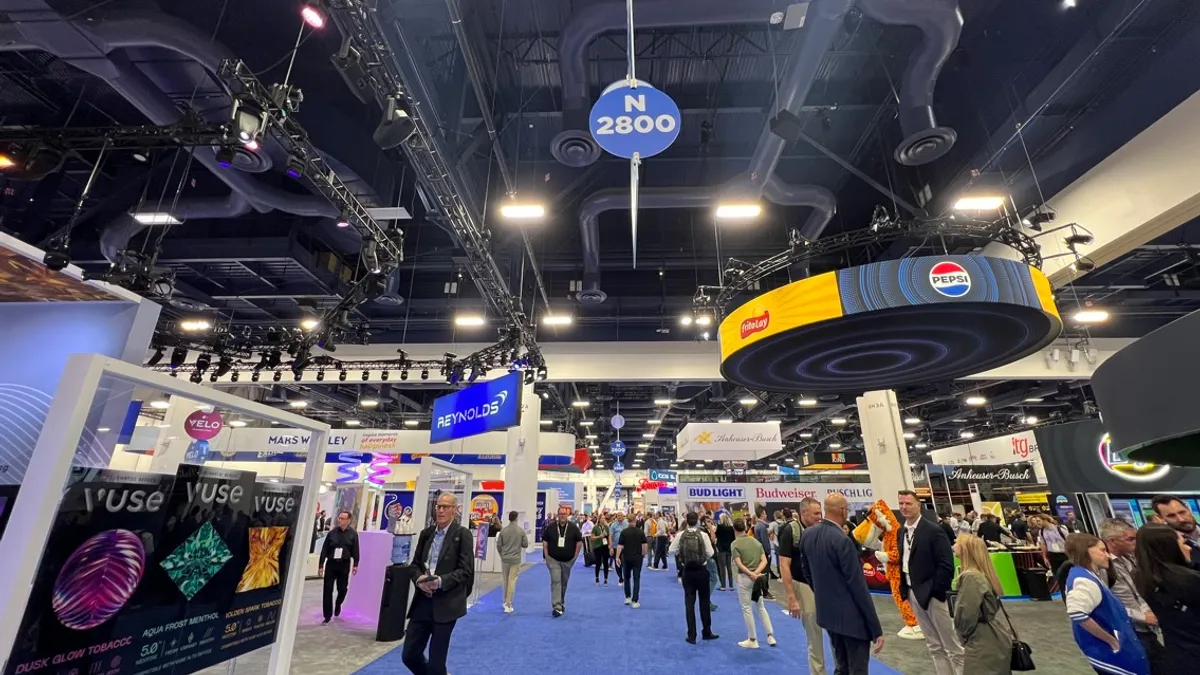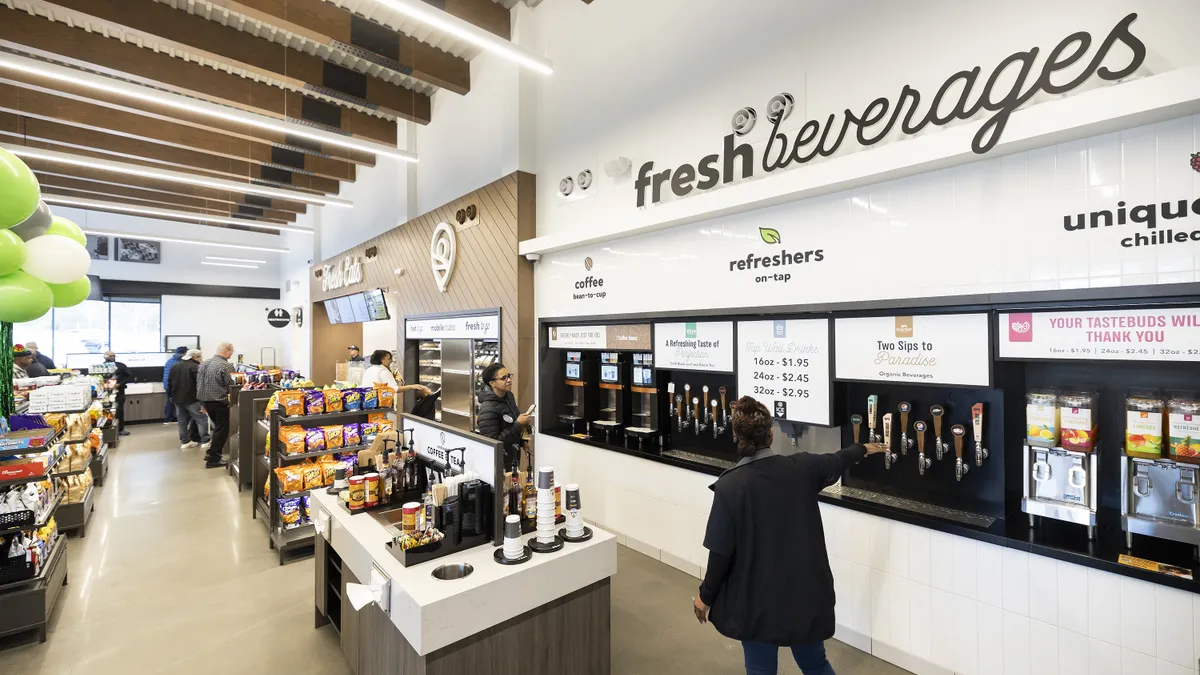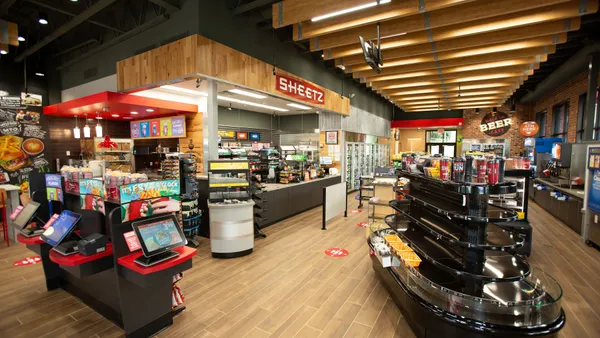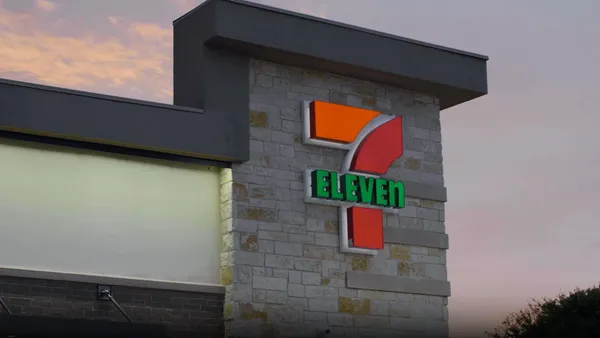Although attendees’ feet were more achy and social batteries less powerful than earlier in the week, the third — and my final — day of the 2024 NACS Show was just as impactful as the first two.
A presentation on labor once again stole the show Wednesday morning, this time with a focus on employee training. Day three also featured experts sharing lessons about cybersecurity risks and some harsh truths about the state of c-store loyalty programs. And as usual, the show floor had no shortage of innovative food and tech products.
Here’s what I took away from day three of the show.
Retailers must evolve their employee training programs
A recent study showed that 74% of retail employees said they’d be able to achieve more and feel more fulfilled in their jobs if they had effective training, Abby Curlin, corporate recruiter and training developer for Texas Born (TXB) Stores, which operates over 50 locations across Texas and Oklahoma, said during a Wednesday morning presentation.
Although that study was done in Europe, its message should be loud and clear to U.S. convenience retailers: Quality employee training programs are vital to retention.
“If you don’t touch your training [program] for five years, you’re behind,” Curlin said. “Training is a continuous cycle, and we have to be continuous learners as the people writing the training.”

Curlin shared that TXB previously had issues with its training program — it was difficult to follow and was cumbersome, and many team members never even finished it or retained its value. This resulted in early terminations, with many new hires leaving in their first three months.
The company scrapped its program and brought on a new one. The current program is five days long. Employees earn certifications on day one, watch company culture videos on day two, learn hospitality and customer service best practices on day three, rehearse safety practices on day four and learn cleaning routines on day five.
Turnover at TXB has decreased by 60% since developing the new training program this year, Curlin said.
Get ahead of cybersecurity threats before it’s too late
Cybersecurity incidents don’t happen every day in the c-store industry, but when they do, retailers can spend years recovering. On average, a cybersecurity breach can cost a c-store retailer $5 million annually, Paul Suarez, vice president and chief information officer for Casey’s General Stores, said during a presentation on Wednesday.
The sooner c-store retailers can update their systems, implement preventative measures and practice responding to an incident, the less likely they’ll be to experience an attack — and the better positioned they’ll be to recover from one, Suarez and other experts agreed.
Suarez suggests appointing an incident lead, or someone to focus on recovering any systems that were breached if an incident occurs. Having a dedicated staffer during this chaos can help keep things organized and “stop the bleeding,” he added.
“Leave them alone and give them the resources that they need,” Suarez said.
Andrew Buel, a special agent on the FBI’s Las Vegas Cybersecurity Task Force, recommends that convenience retailers join InfraGard — the FBI’s program that offers business owners education, information sharing, networking and workshops on cybersecurity threats — to stay informed on what to do in the case of a breach.
“It helps us because we’re able to collect evidence for our investigations and go after cyber criminals,” Buel said. “But it helps you, as well, because we’re able to provide you information about that intrusion that’s occurring so you can remediate that and get back to business.”
Fried chicken preferences are changing
Fried chicken is a staple at every NACS show and one of the more popular food items across convenience stores in the U.S. And just like other foodservice products, fried chicken continues to evolve in c-stores.
Boneless wings and chicken tenders usurping bone-in is a major example of that evolution. Experts from three fried chicken suppliers — Chester’s Chicken, Pilgrim’s and Perfectly Southern — agreed that boneless wings and tenders have become more sought-after than bone-in chicken, which historically has been more popular. Meanwhile, Krispy Krunchy Chicken, arguably the biggest c-store fried chicken vendor, just released nuggets for the first time.

Ed Moore, who represents Perfectly Southern — Core-Mark’s fried chicken program — said boneless chicken and tenders only require about five minutes to cook compared to the 15 minutes it takes to fry a bone-in piece of chicken, which could be a reason for the former’s spike in c-stores. Scott Richardson, sales manager for Pilgrim, said younger generations are also spiking the interest in boneless and tenders due to “ASMR” videos on TikTok. This is a sensation people may feel while listening to certain sounds or watching certain things, such as the crunch of a piece of chicken.
William Culpepper, vice president of marketing for Chester’s, said that he recently went to a chicken drive-thru with his kids. When the staff said they only had bone-in chicken left for the day, Culpepper said his kids chose to leave.
Employee-assisting AI continues to emerge
Convenience retailers have dabbled with artificial intelligence to assist their employees over the past few years. Although many operators remain skeptical, others are charging full steam ahead with it.
One newer use case of employee-assisting AI in the c-store industry has been voice analytics. For example, InStore.ai places microphones at the register and records conversations between c-store employees and customers. The company’s software uses AI to analyze those conversations and create actionable reports for retailers to fix any issues.
Earlier in the week, regional c-store chains Jacksons Food Stores and Cubby’s Convenience Stores outlined how they’re using InStore.ai’s technology to address various issues, such as broken card readers at checkout or fuel spills at the pump. Other c-store retailers that are using the technology include Parker’s Kitchens, Atlantis Fresh Market and FavTrip.
A shift in c-store loyalty is needed
Across all business types, most loyalty programs still rely on mechanics that date back to the ‘80s and ‘90s, which has led to an oversaturated market and dissatisfied customers, Tom Fleming, partner for management consultancy Oliver Wyman, said during his presentation on loyalty Wednesday morning.
Loyalty programs that prioritize the customer experience, Fleming said, will outperform those that focus on discounts and promotions. When programs mainly focus on the latter, consumers struggle to differentiate these platforms from one another, he added.
“It’s impossible to win on giving better rewards and discounts,” Fleming said.
Retailers should instead zero in on fostering personal relationships with their customers by using data to personalize the loyalty experience, Fleming said. If retailers pivot their strategy to this instead of rewards and promotions, they sky's the limit.
“If you can get that right, you’ll have a program that’ll just take off,” he said.












